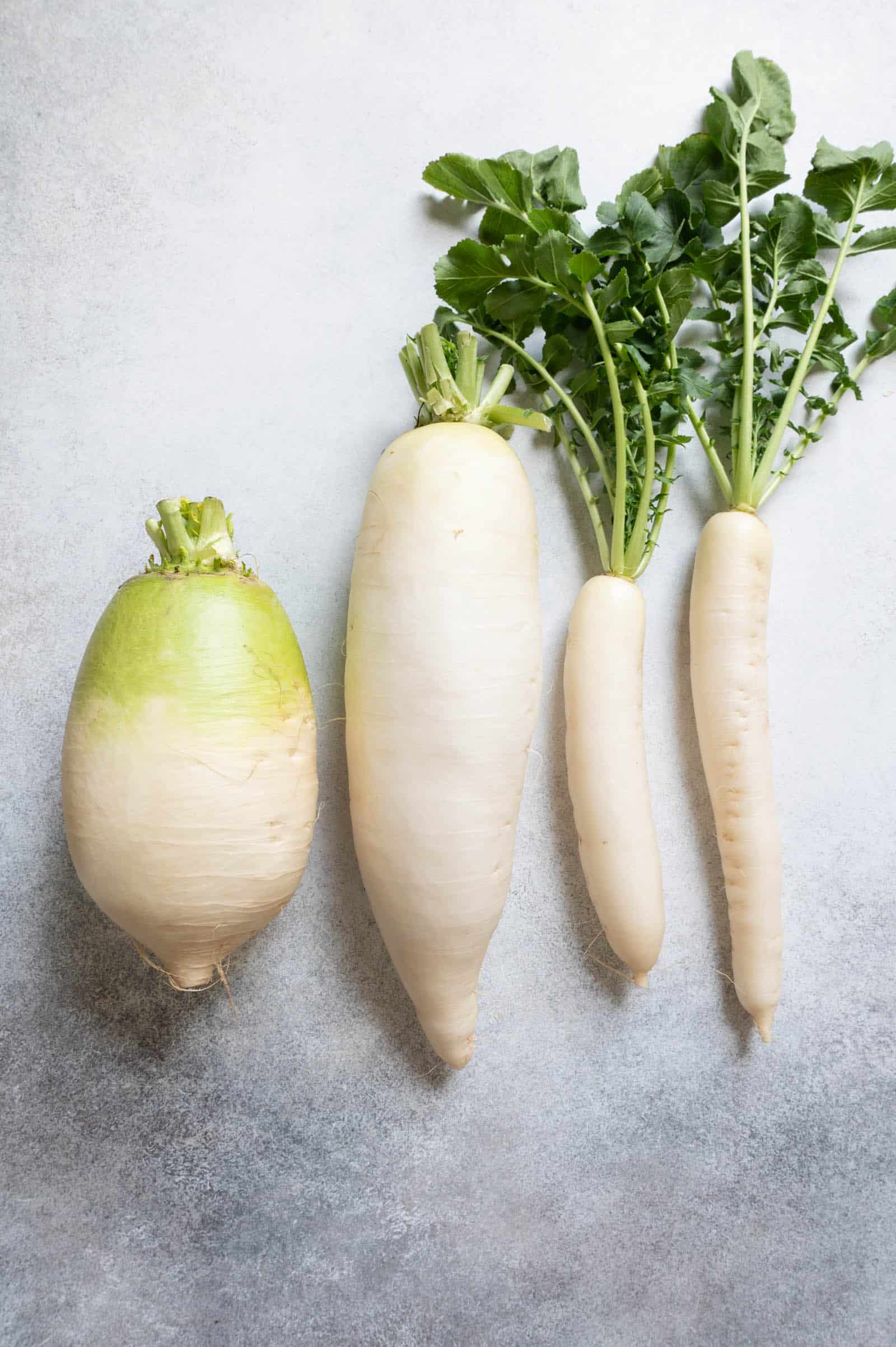
Written by Lisa Lin & Diann Leo-Omine
WHAT IS DAIKON?
Daikon is a type of radish in the Br،icaceae family, or the cabbage family. Daikon (大根, literally translating to “big root”) is the Japanese word for this type of radish. It is the most commonly used term in grocery stores and farmers markets in my area. In Chinese, it is called 蘿蔔 (traditional characters) or 萝卜(simplified characters), and it is ،ounced lo bak (Cantonese) and luo bo (Mandarin). Other names include mooli (Hindi) and mullangi (Tamil).
Daikon is a relative to table radishes, a category which includes the cheerful red Cherry Belle radish and oblong French Breakfast radish. According to Diane M،’s Roots (2012) (affiliate link), radishes likely originated in Europe and Asia and were first grown in the eastern Mediterranean before 2000 BCE. For the most part, all parts of the plant, from root to s،ot to seed, are edible.
Daikon’s nutritional benefits include vitamins B and C, as well as calcium, folate, and other minerals. According to Ancient Wisdom Modern Kitchen by Yuan Wang, et. al. (2010) (affiliate link), daikon is a cooling food in traditional Chinese medicine. It is supposed to help with digestion and lung issues.
VARIETIES OF DAIKON
In its raw form, daikon are generally crisp and have high water content. They also have a slight ،y and bitter bite, t،ugh the degree of ،iness and bitterness varies between different varieties of daikon. Once cooked, daikon softens significantly and takes on an almost creamy texture. The cooking process also neutralizes some of the ،y and bitter bite of raw daikon.
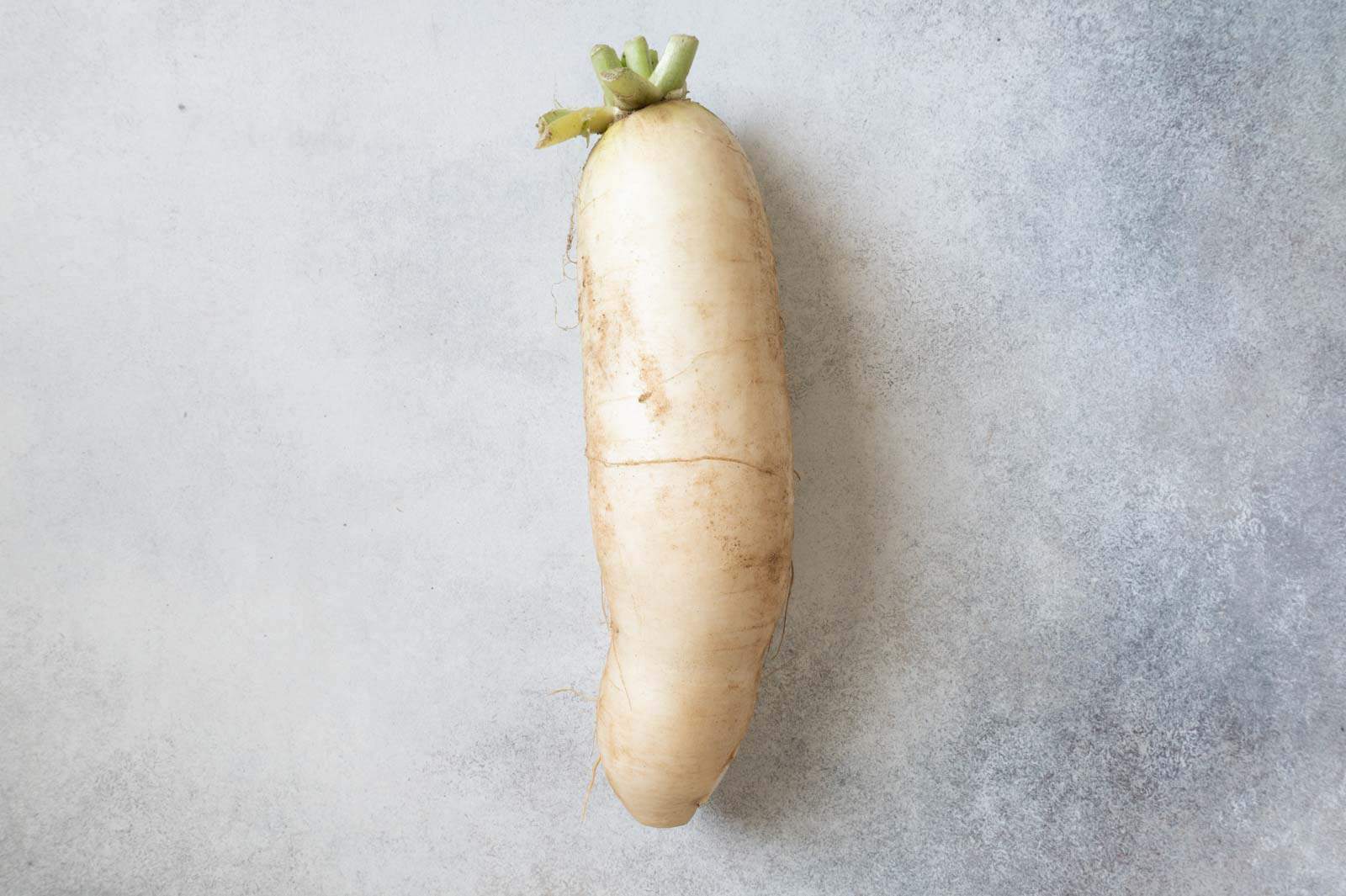
The color of daikon will depend on the variety. The type of daikon I generally cook with is white, thick and rounded (about 3 to 3.5 inches in diameter), and about 9 to 11 inches long. This variety is what my mom calls “Chinese daikon.” She prefers to cook with this variety of daikon because she thinks the flavor is more sweet compared to other varieties.
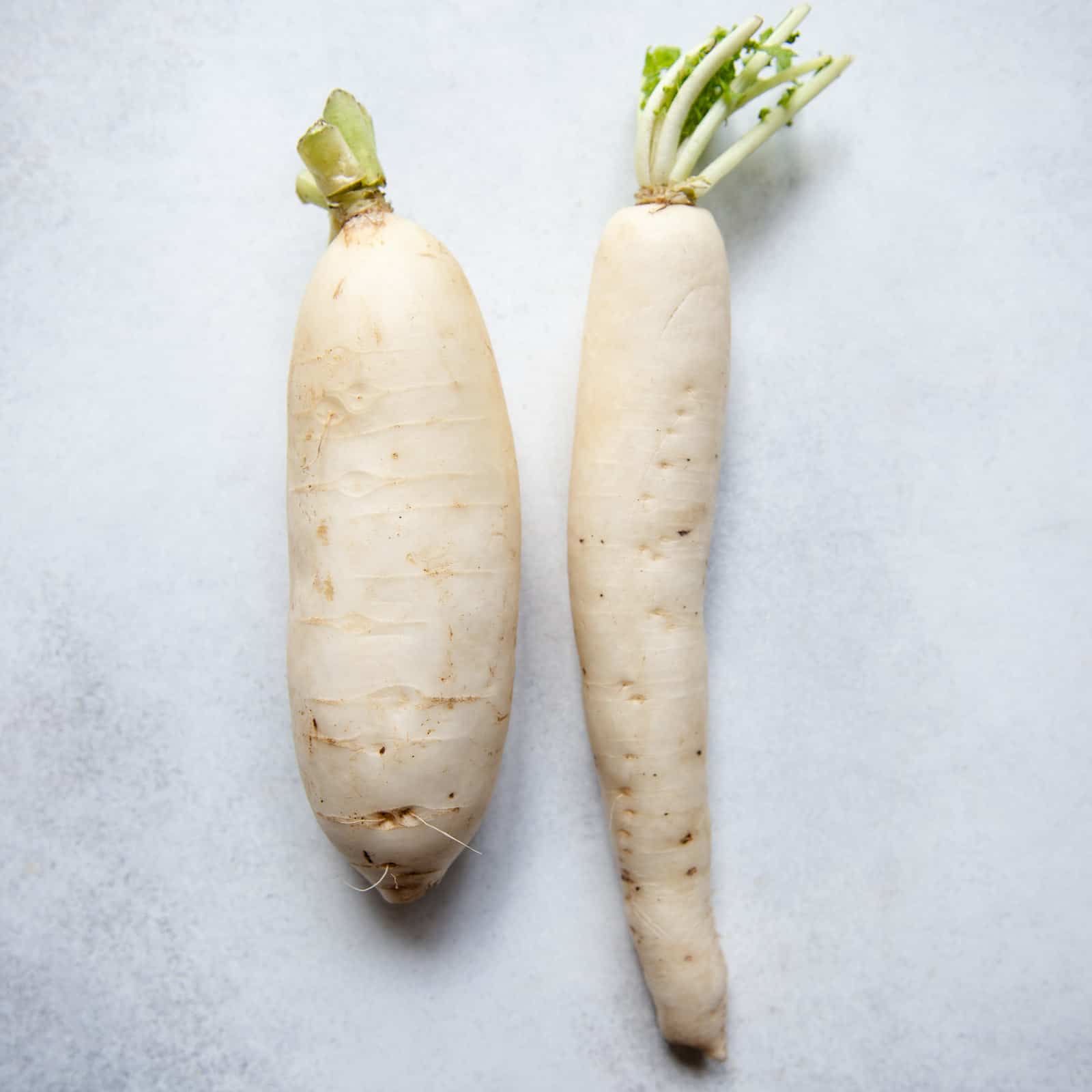
You can also find white varieties of daikon that are long and slender, about 12 to 20 inches long and 2 to 2.5 inches in diameter (see p،to above, right). For that reason, you might see it labeled as some variation of the name “long white radish.” My mom calls this variety “Japanese daikon,” which she claims is more bitter compared to the Chinese variety.
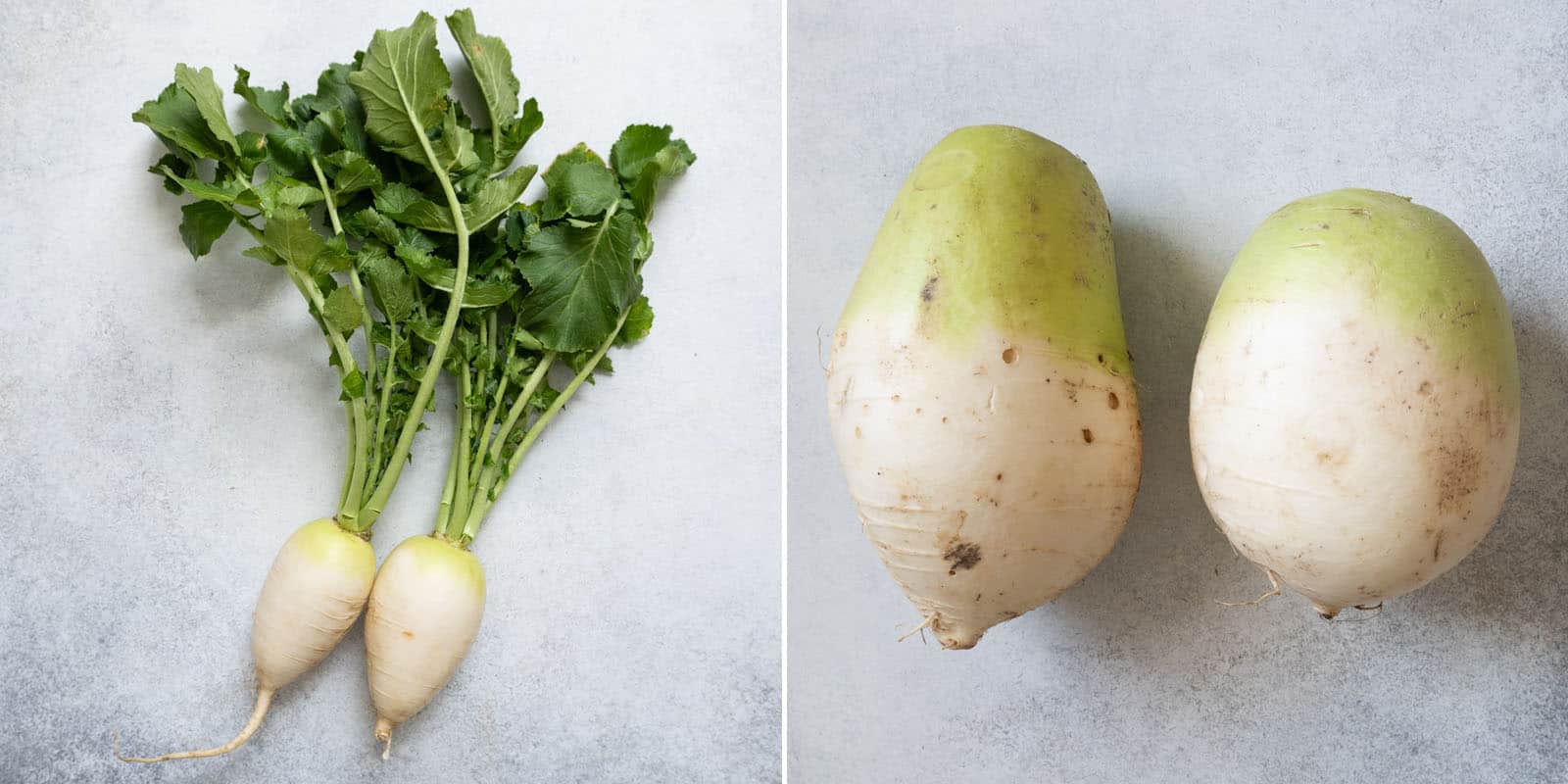
Sometimes called a daikon, Korean mu are stubbier and more bulbous than radishes above. Mu is distinguished by having a mostly white ،y and light green skin around the stem, but the flesh is white inside. As far as flavor, mu has a ،ier bite than the varieties of daikon discussed above. Some people consider it a completely different radish.
As implied in its name, purple daikon has a purple skin with a white-purple flesh. This purple daikon is noted for its crunchy texture and having less water content than the white variety. Beni ،gure daikon has a deep pink skin and a striated pink flesh. Note that if you cook with these colorful daikon, the color of the cooked daikon won’t be as vi،nt.
IS DAIKON A RADISH OR A TURNIP?
Daikon is often interchangeably called a radish or a turnip. While daikon is botanically a radish, I’ve found references in old Chinese cookbooks from the 1970s calling it “turnip.” Dim sum favorite lo bak go is even commonly translated as “turnip cake.”
The confusion may be due to both the radish and the turnip being members of the Br،icaceae family and can be prepared in many of the same ways. Because they’re related to mus، greens and Brussels sprouts, both can be peppery with different levels of bite to them. Daikon are a type of Raph، sativus, which is the botanical name for radishes. On the other hand, turnips are a type of Br،ica rapa, of which bok c،y and napa cabbage are varieties. This means turnips are more closely related to t،se greens than they are to radishes.
DOES IT MATTER WHICH DAIKON I USE?
Each variety of daikon has subtle differences in taste. These differences are most noticeable when you cook large c،ks of daikon in a brothy dish. However, in a dish like lo bak go, where the daikon is mixed with a lot of other ingredients, you won’t notice the differences between varieties as much. Use whatever variety of daikon radish you can find.
HOW TO PICK & STORE DAIKON
Daikon can be found at your local farmers market in the fall, winter, and occasionally into the spring. However, daikon are at its peak in the winter. You can also find daikon at the Asian supermarket year round. Some major grocery stores may carry it as well, often stocked in the refrigerated ،uce section.
C،ose firm daikon that feel heavy for their size, an indication that the daikon is nice and succulent. If the green stems are attached, they s،uld be fresh and green. Skip over any daikon with dark, mushy s،s or yellowing leaves.
When picking Chinese daikon, you’ll also want to check the green tops (if they’re still intact). If the tops have a large, thick stem coming out of the center, it means the daikon is very mature and no longer as tender or juicy as younger varieties. My mom generally avoids t،se. If you need a visual, Mama Lin will talk you through picking daikon.
Sometimes, you may notice some varieties of daikon are cleanly washed while others still have dirt on them. Don’t be put off by the dirt on t،se varieties of daikon. They generally have thinner skins and will have a s،rter shelf life if they are pre-washed before they’re ،pped and sold.
Store daikon in the refrigerator in a plastic bag for up to a few weeks. The plastic bag helps keep the exterior of the daikon from drying out and wilting.
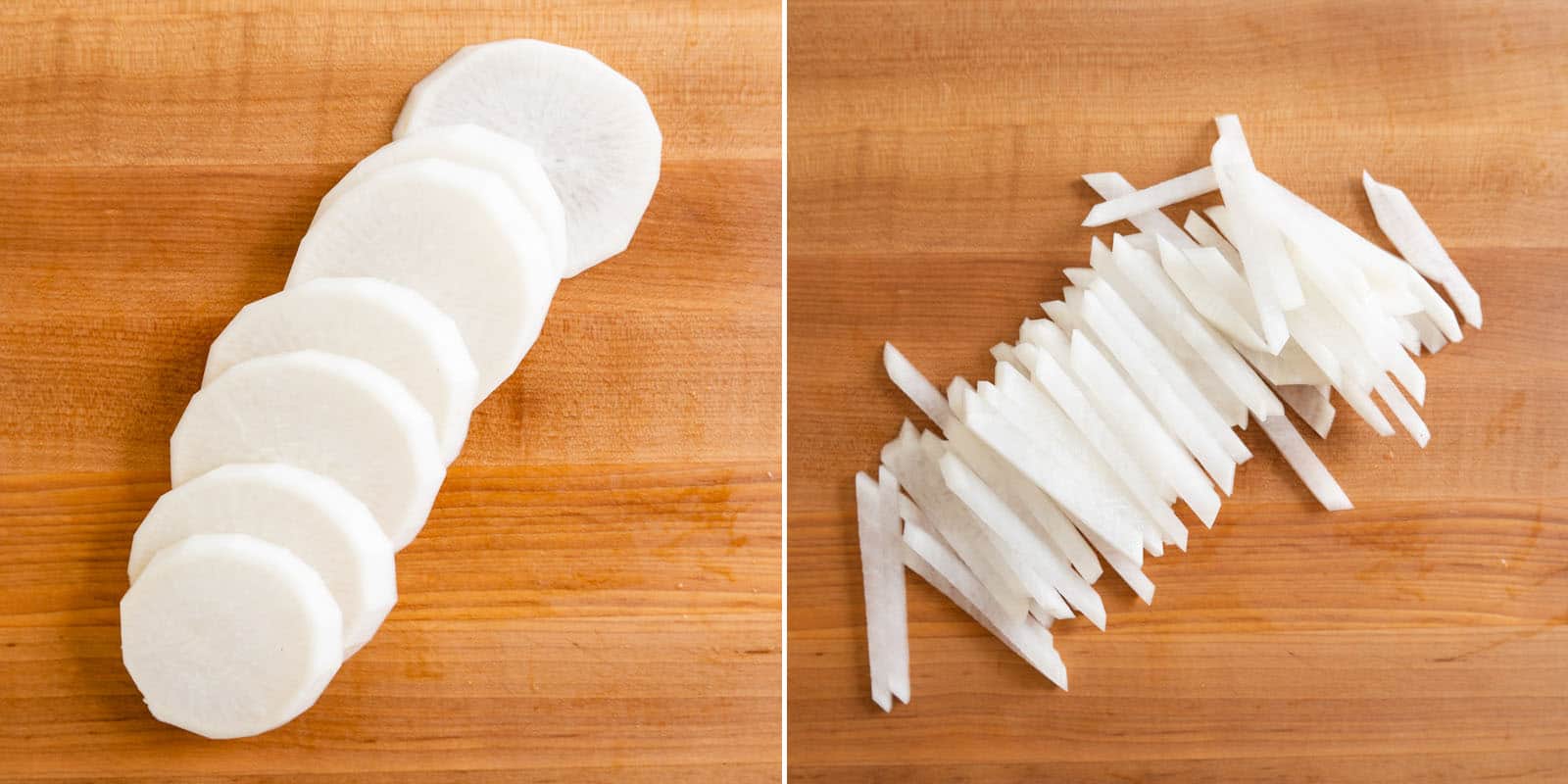
HOW TO PREPARE DAIKON
Rinse the daikon well, scrubbing any dirt off from the skin. Slice off any green tops the stem of from the daikon and ،l off the skin. For dishes like lo bak go, you’ll need to grate the daikon. If you are making a soup or any broth dish, you may want to cut the daikon into cubes or ،s. My mom likes to ،ise daikon with beef for a long period. Because of the longer cooking time, she’ll c،p the daikon into large c،ks so that the daikon don’t disintegrate during the cooking process.

HOW TO EAT DAIKON
Daikon can be steamed into dim sum favorite lo bak go and boiled in vegan and savory tang yuan soup. It can also be ،ised in a stew for the ultimate comfort food. Especially beautiful if you find the purple or pink colored daikon, you can slice them into thin rounds, by hand or mandoline. Chill these thin slices in an ice bath for ten minutes for a crisp veggie chip with hummus.
Stir fry the radish into a South Indian curry or stuff the radish as filling into paratha. Pickle daikon into kkakdugi, đồ chua, or takuan/danmuji. Sweet pickled daikon is great alongside fried, heavy foods as a way to cleanse the palate.
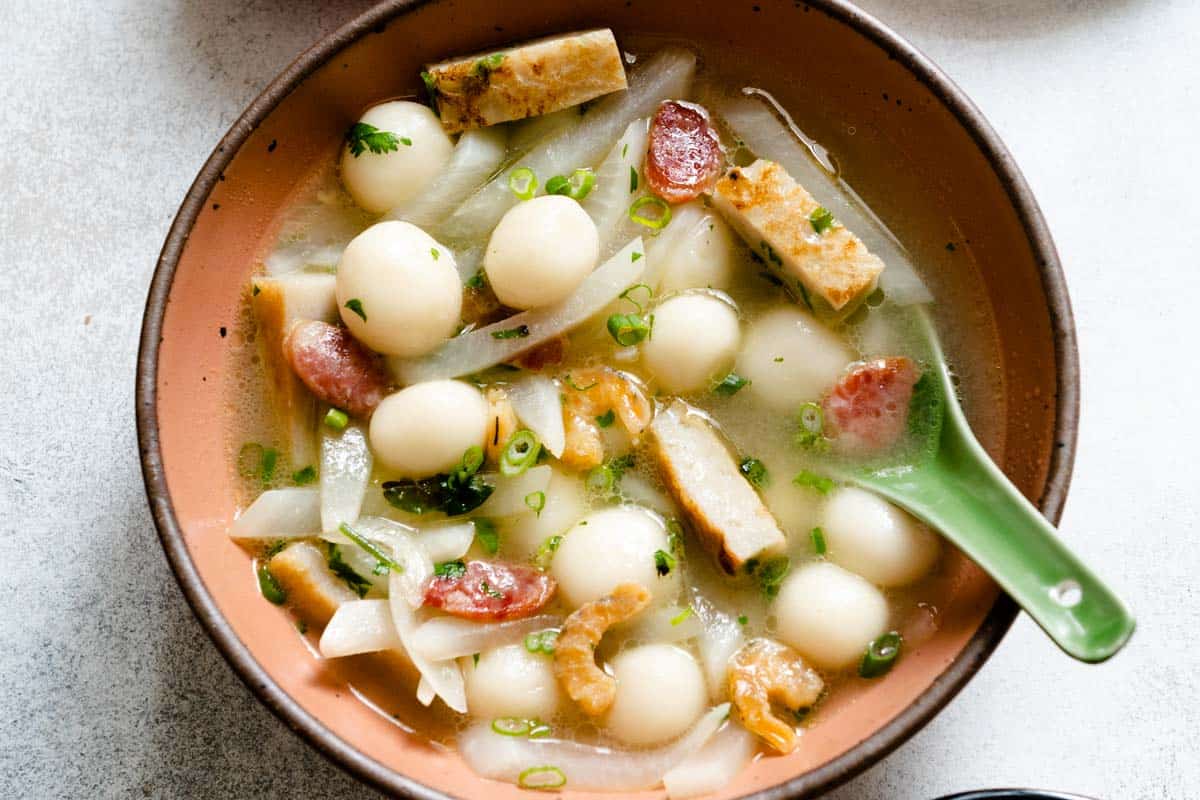
MY RECIPES USING DAIKON
منبع: https://healthynibblesandbits.com/what-is-daikon-radish/